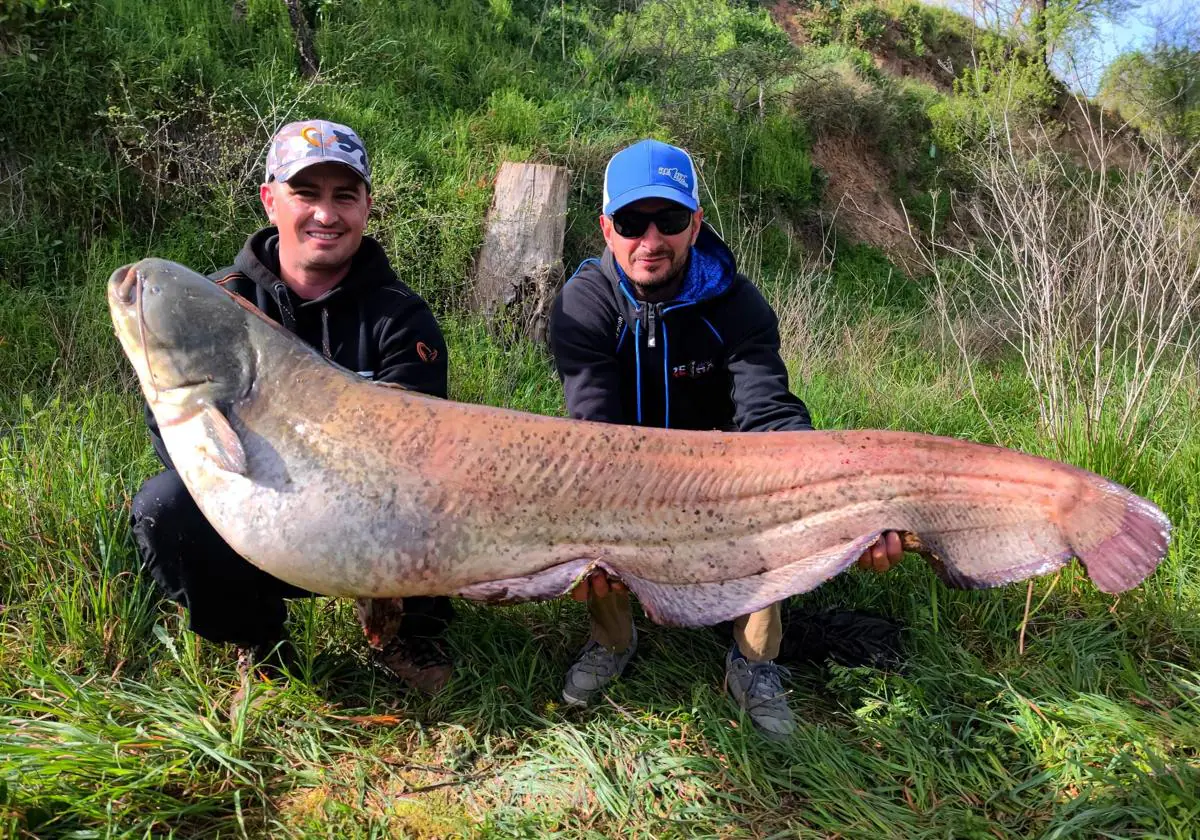

Sections
Highlight

Eva Esteban
Valladolid
Friday, 5 April 2024, 15:48
"At the moment it is not affecting other species, but little by little it will own the rivers," predicts the Valladolid representative of the Castilla y León fishing and casting federation Roberto Carlos Valdivieso, about the growing presence of catfish in the main rivers of the northern Spanish province. Although he calls for calm and insists that at present this predator "is not a problem", he points out that it is an invasive species that has been "established" in Valladolid "for three or four years".
In the Duero, he says, they can be found "almost all along its course". In the Pisuerga, it's much the same story. "The San Miguel del Pino area is where it is most common to go fishing. In the Pisuerga, in Valladolid itself, there have only been a few and in Simancas there have also been a few already," Valdivieso says, adding that they have been spotted in Valladolid for a number of years now and weigh at least twenty kilos.
However, they can be even bigger, like the one caught on Monday 1 April by Sergio Rodríguez and Adrián Hidalgo in the vicinity of Villanueva de Duero. These two Valladolid-born fishermen, who have shared their hobby for almost two decades, had gone to Villanueva de Duero to catch pike.
They knew that there were "some catfish" there, but not as big as the one they caught in the Duero: 1.70 metres long and weighing around 35 kilos. "We didn't expect it, it was a coincidence," they agree, while highlighting the complexity of the catch. "The area where we were fishing was a bit complicated, quite high, with very long rods and against the current it's more difficult when it comes to catching fish," they explain.
But it didn't stop there. Enthusiastic and still surprised by the size of the catfish they had just caught, they tried again and caught another one, also large although "a little smaller". The explain that they had never caught one before "either in the Duero or in the Pisuerga". They knew they were present but admit, "We didn't think they were this big. They've been around for four days and they're already like this."
Like the representative of the Valladolid fishing federation, Sergio and Adrián believe that native species will begin to suffer the consequences of the presence of catfish sooner rather than later. "Especially species such as carp or barbel, the population will decrease over the years," says Adrián. "With the pike it will end because it is their competitor, and with the barbel we will see, because it is growing abysmally," continues Sergio.
They all agree that catfish, once introduced into the waters, are practically impossible to eradicate. "They will gradually become the masters of the river and wipe out all the species. There will come a time when they will regulate themselves, as has happened in the Ebro, in Mequinenza," says Valdivieso, while stressing that the only threat that this invasive species may have today are fishermen.
"We have little information because we are fishing where we can and there are many areas of the river that we don't know, where the fish don't get disturbed. In both the Pisuerga and the Duero, one or two percent is fishable, so if you have ten kilometres, fishermen can only access twenty metres," explains Valdivieso.
Publicidad
Publicidad
Publicidad
Publicidad
Esta funcionalidad es exclusiva para registrados.
Reporta un error en esta noticia

Debido a un error no hemos podido dar de alta tu suscripción.
Por favor, ponte en contacto con Atención al Cliente.

¡Bienvenido a SURINENGLISH!

Tu suscripción con Google se ha realizado correctamente, pero ya tenías otra suscripción activa en SURINENGLISH.
Déjanos tus datos y nos pondremos en contacto contigo para analizar tu caso

¡Tu suscripción con Google se ha realizado correctamente!
La compra se ha asociado al siguiente email
Comentar es una ventaja exclusiva para registrados
¿Ya eres registrado?
Inicia sesiónNecesitas ser suscriptor para poder votar.